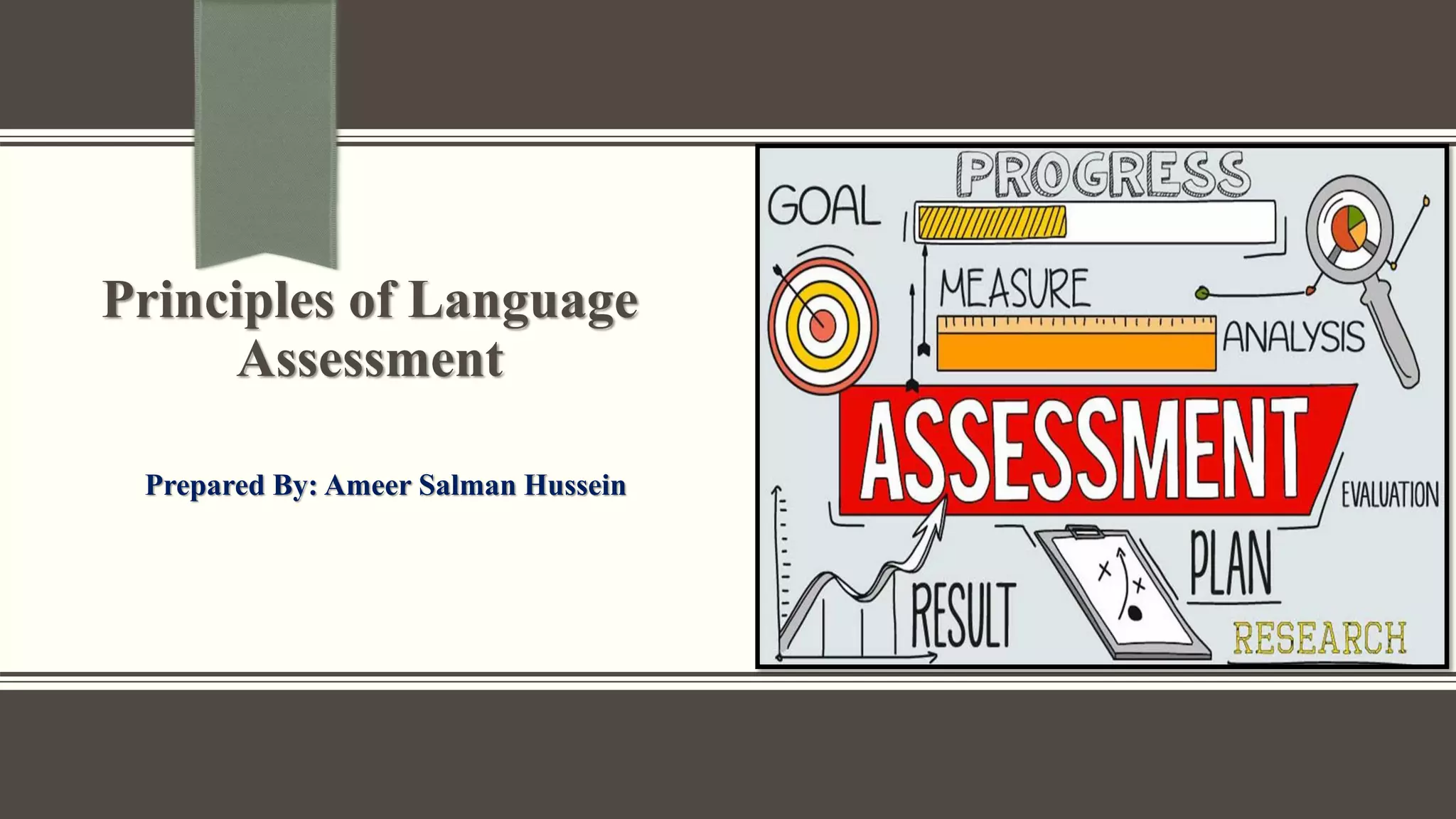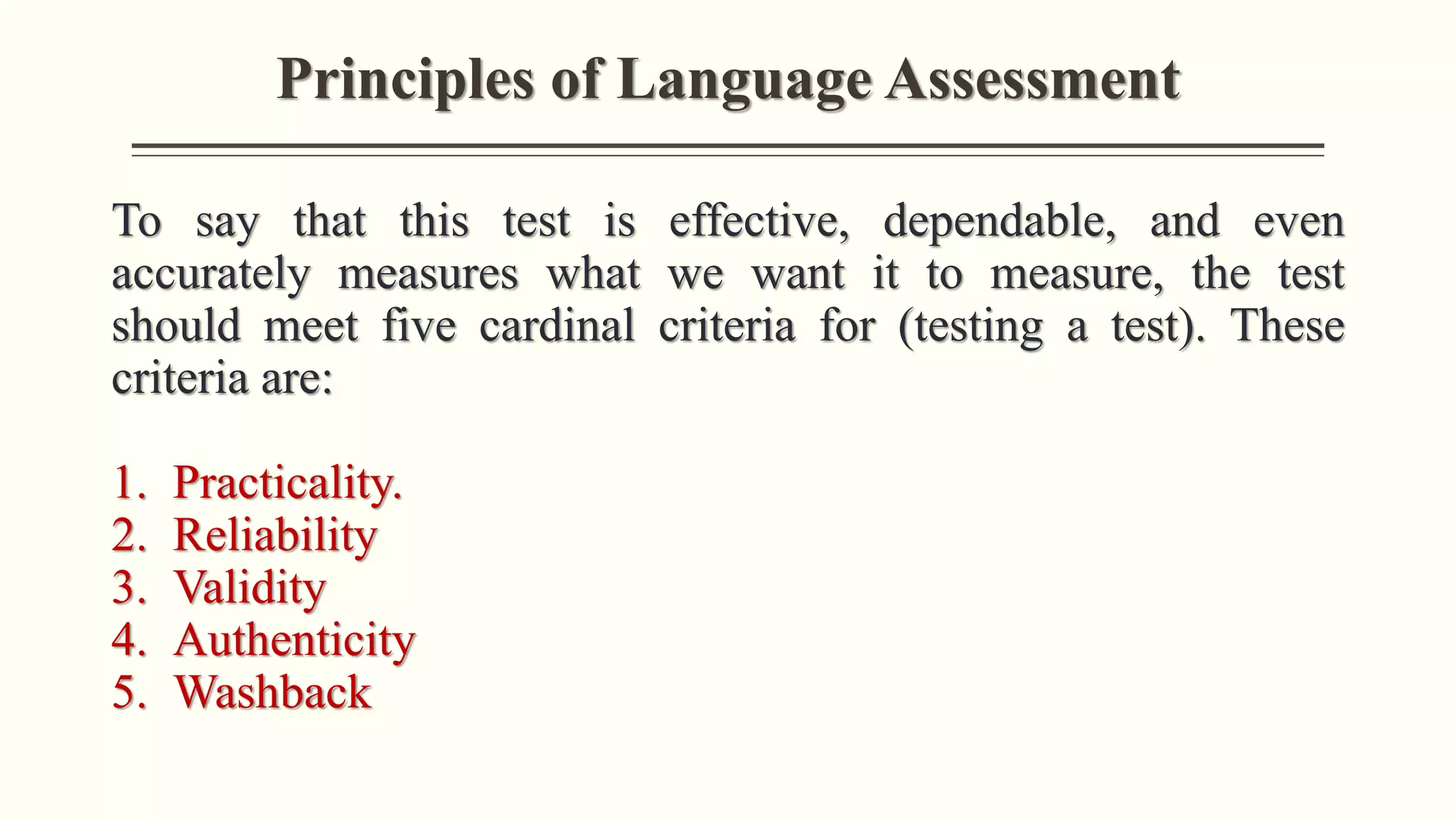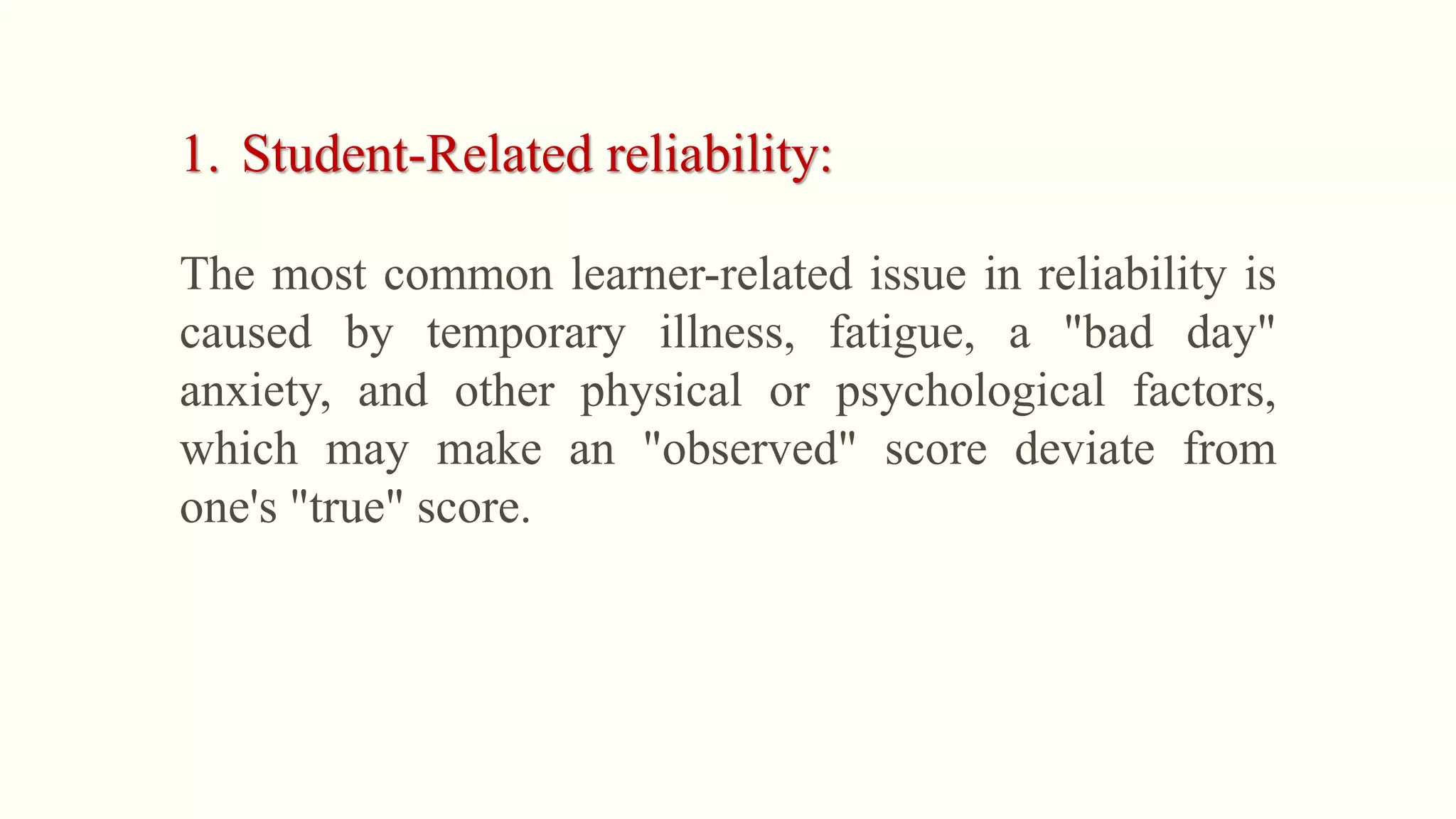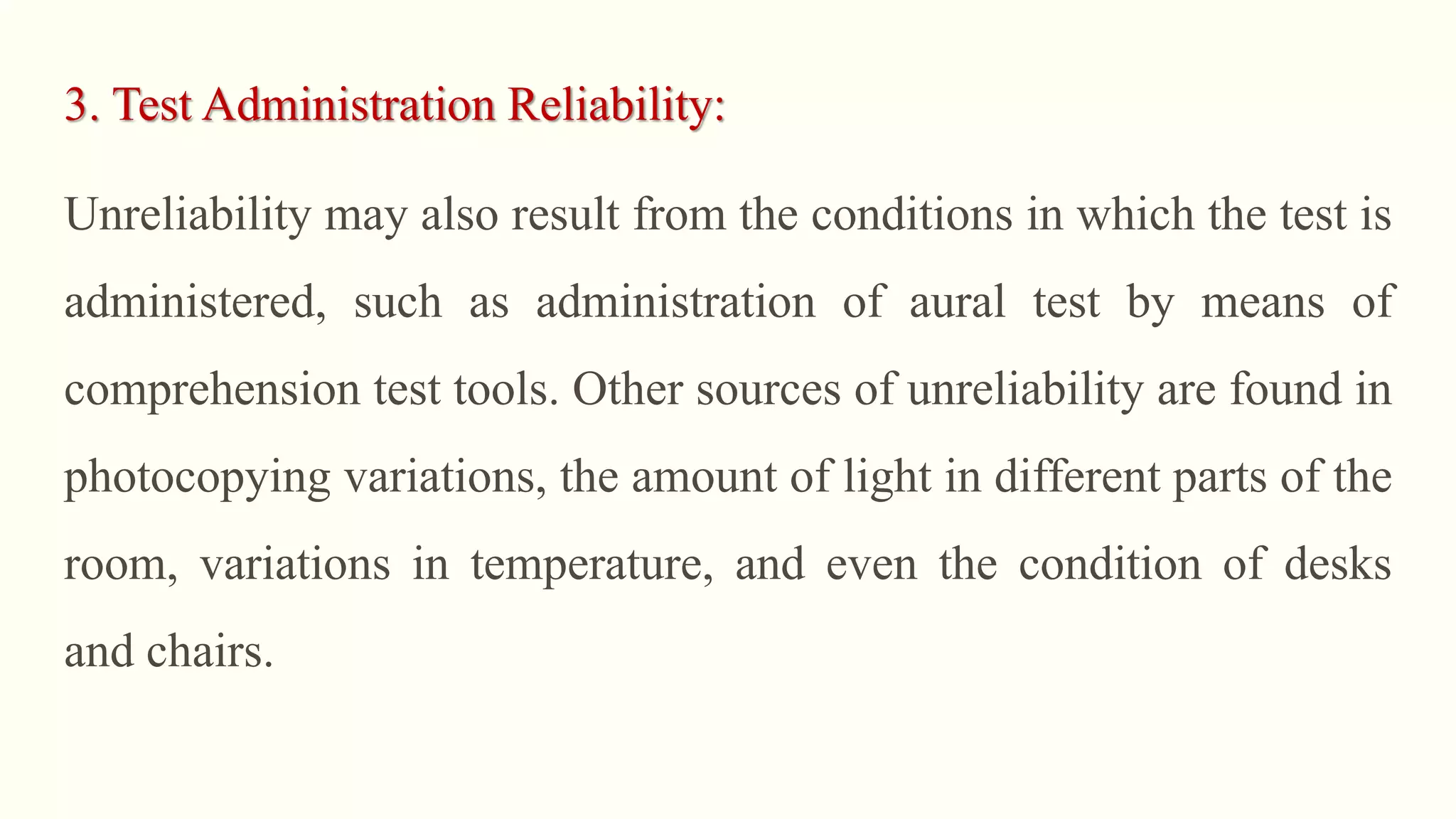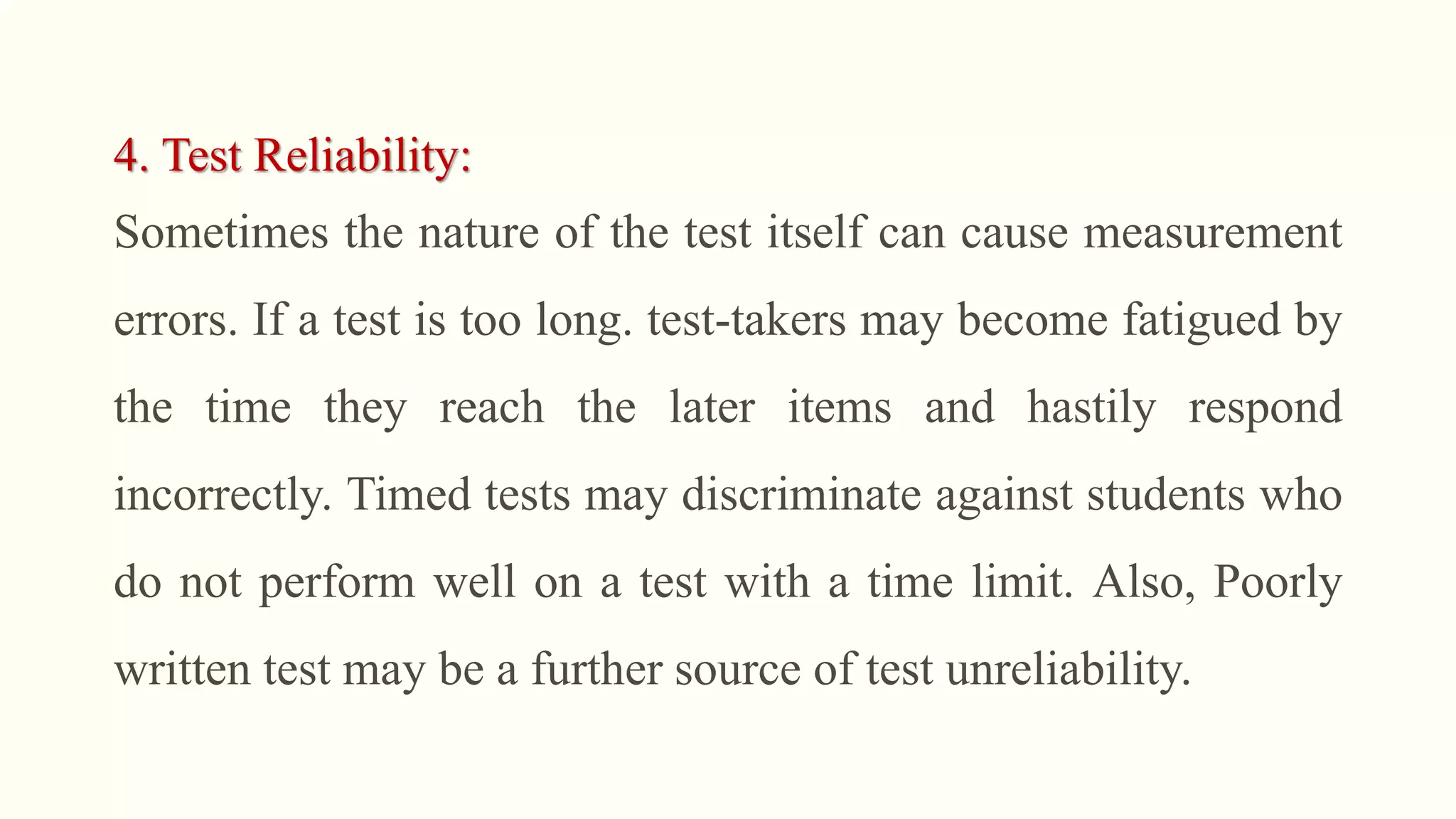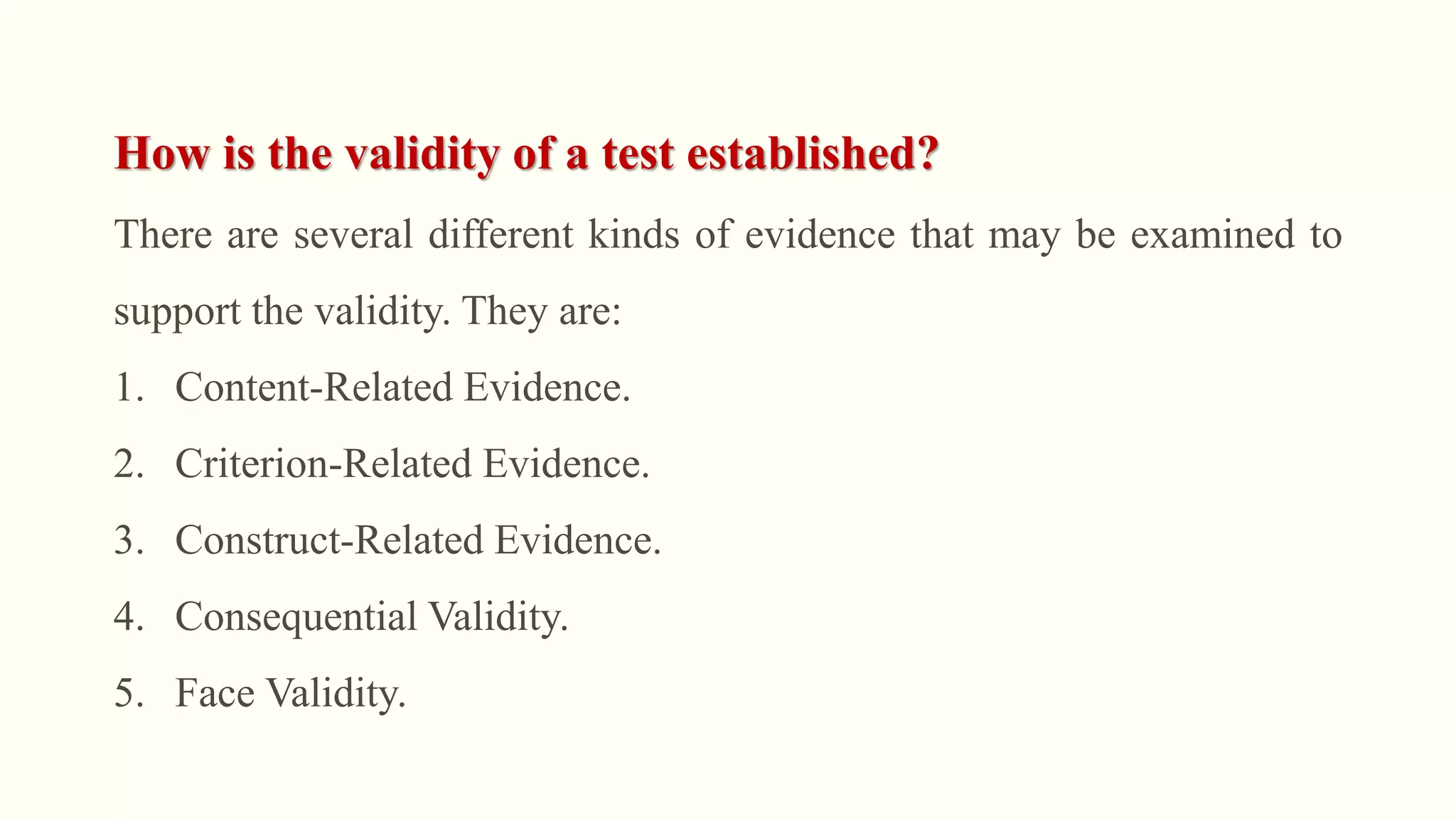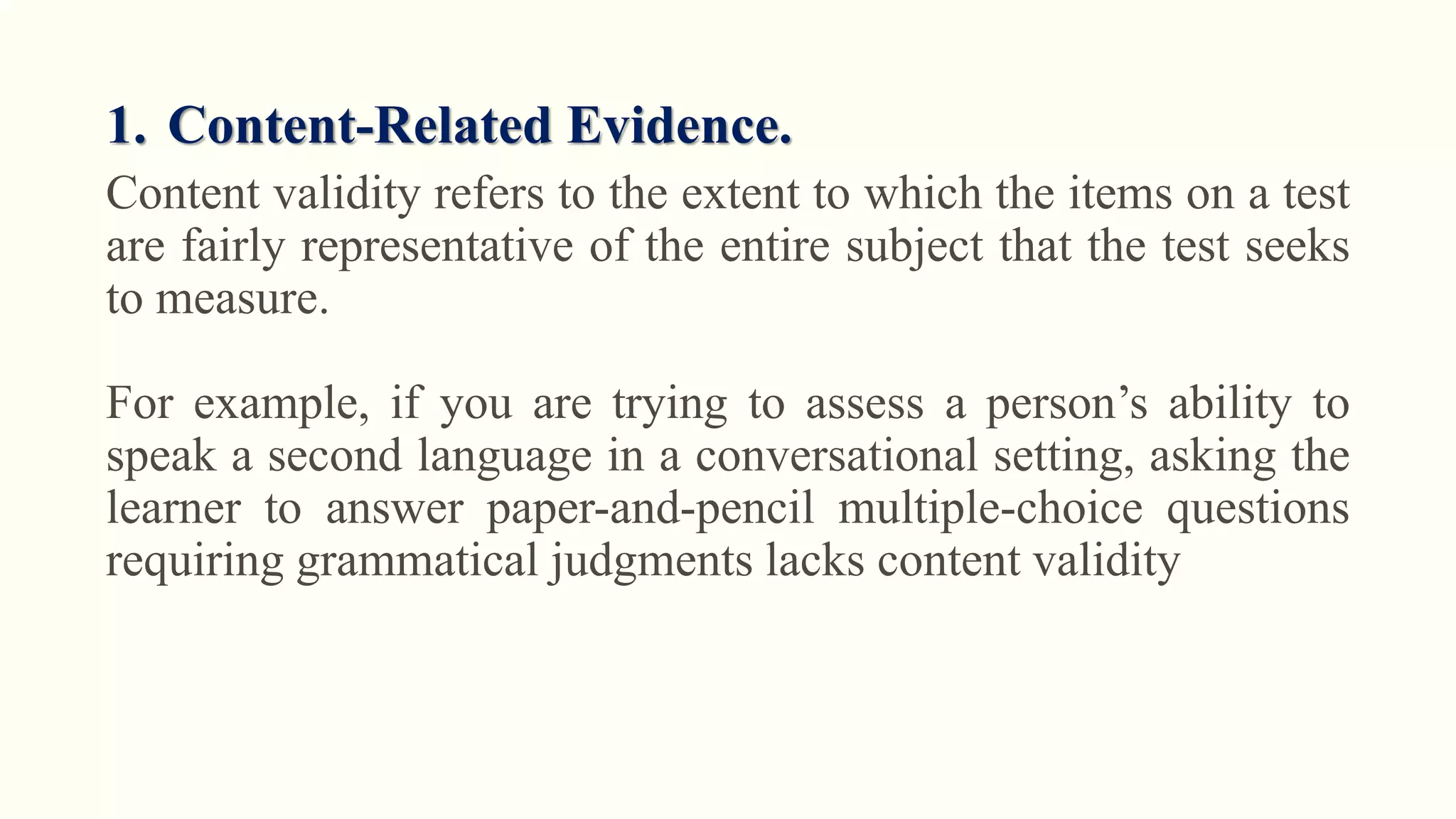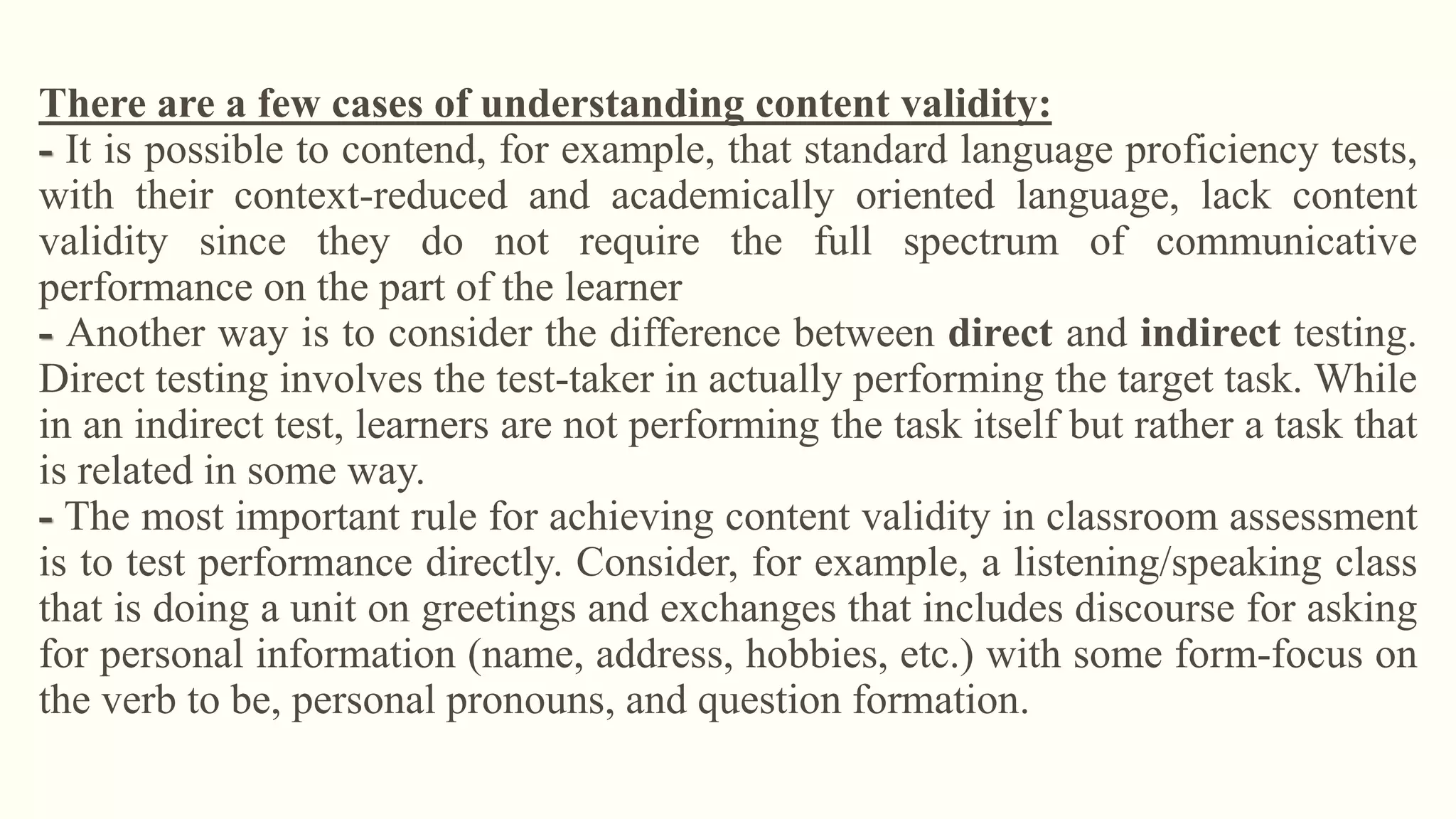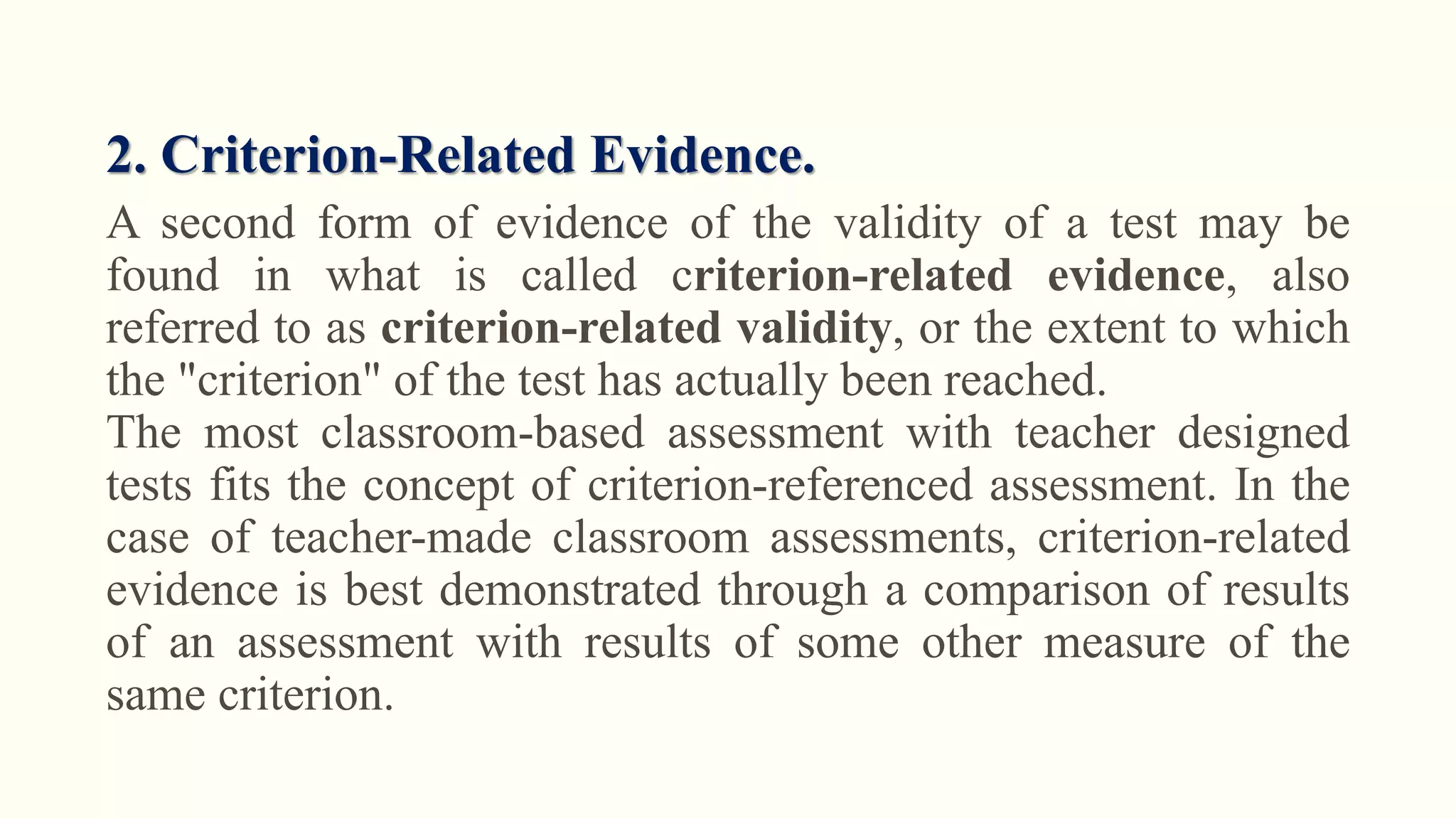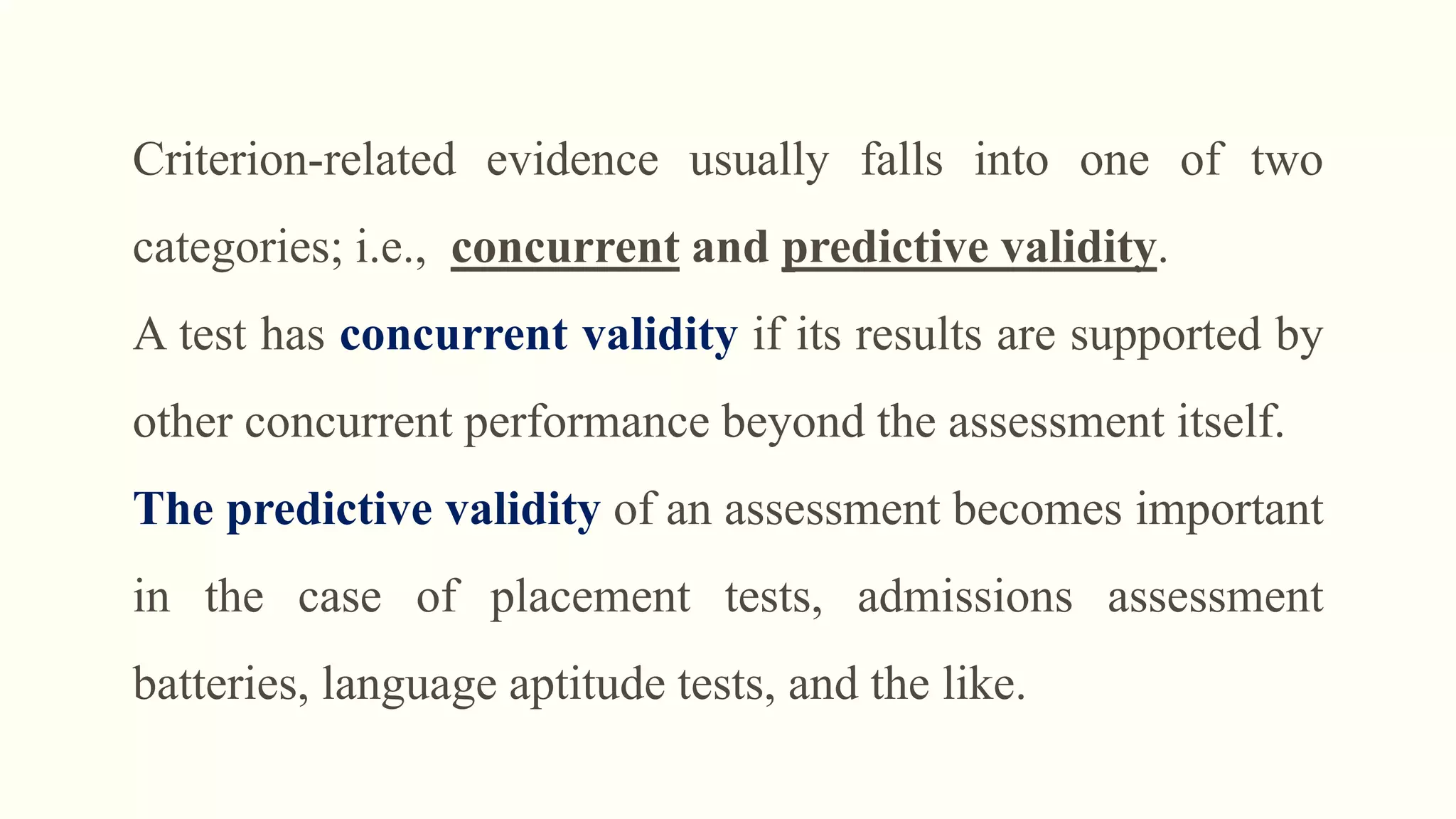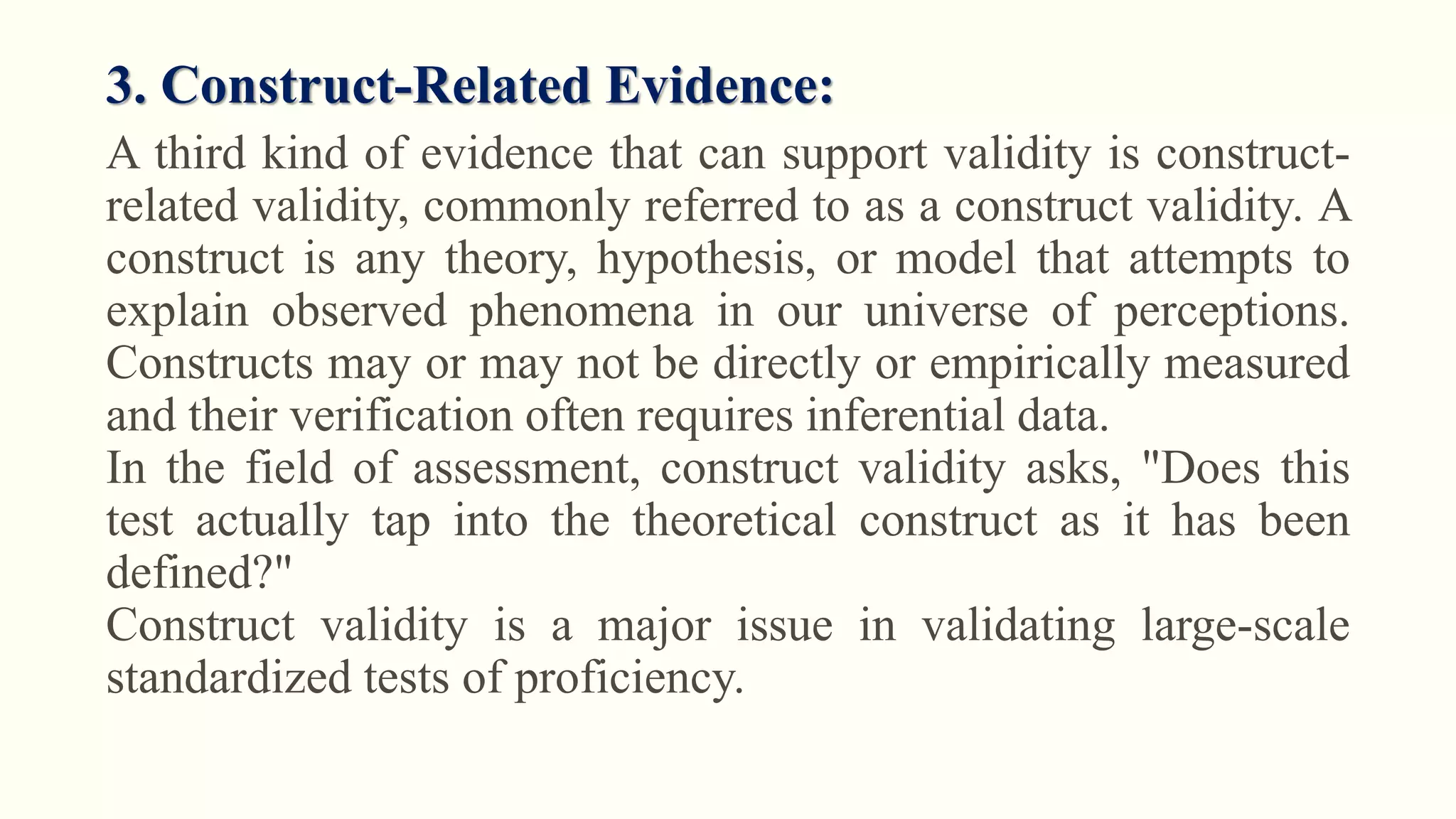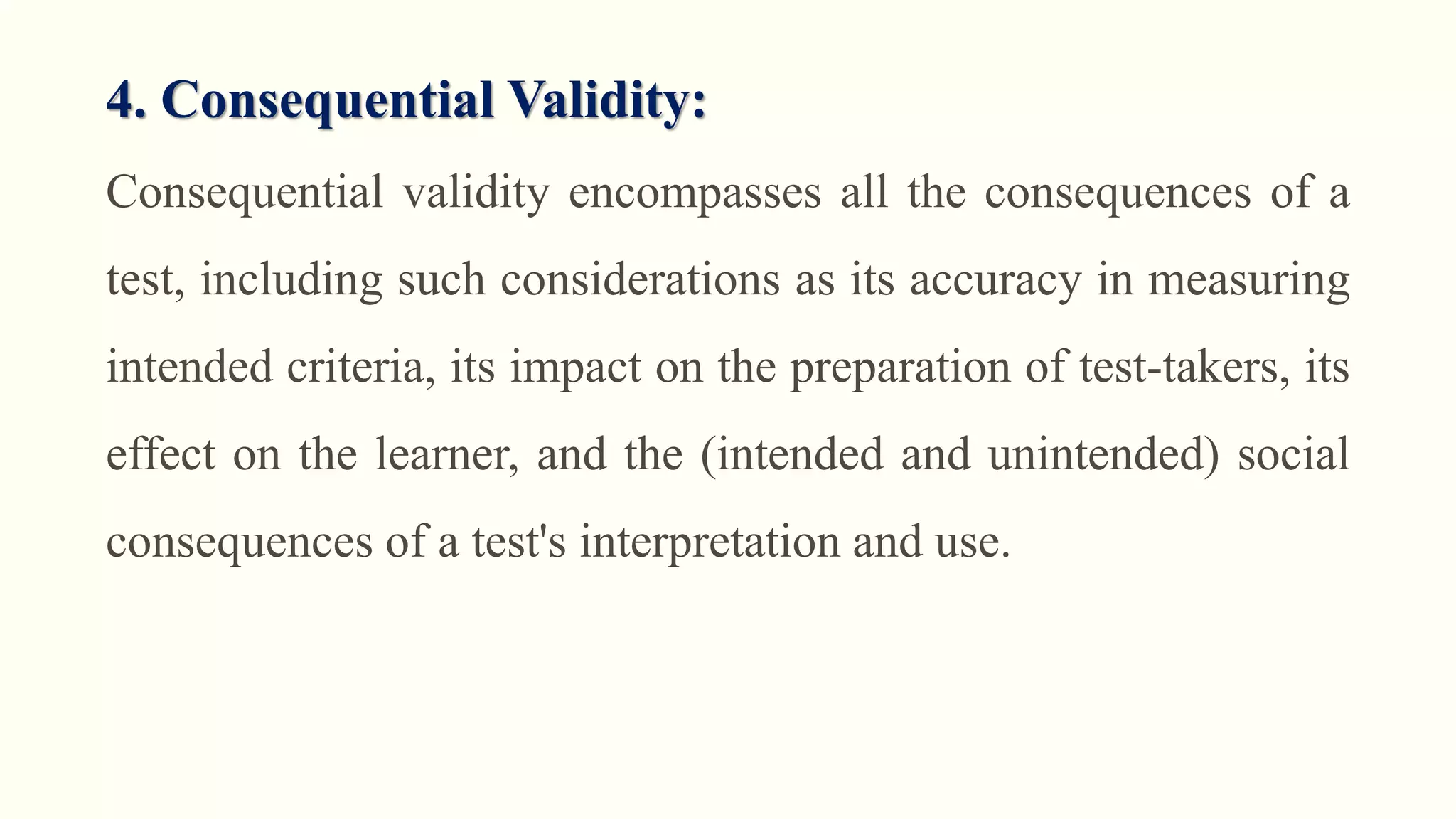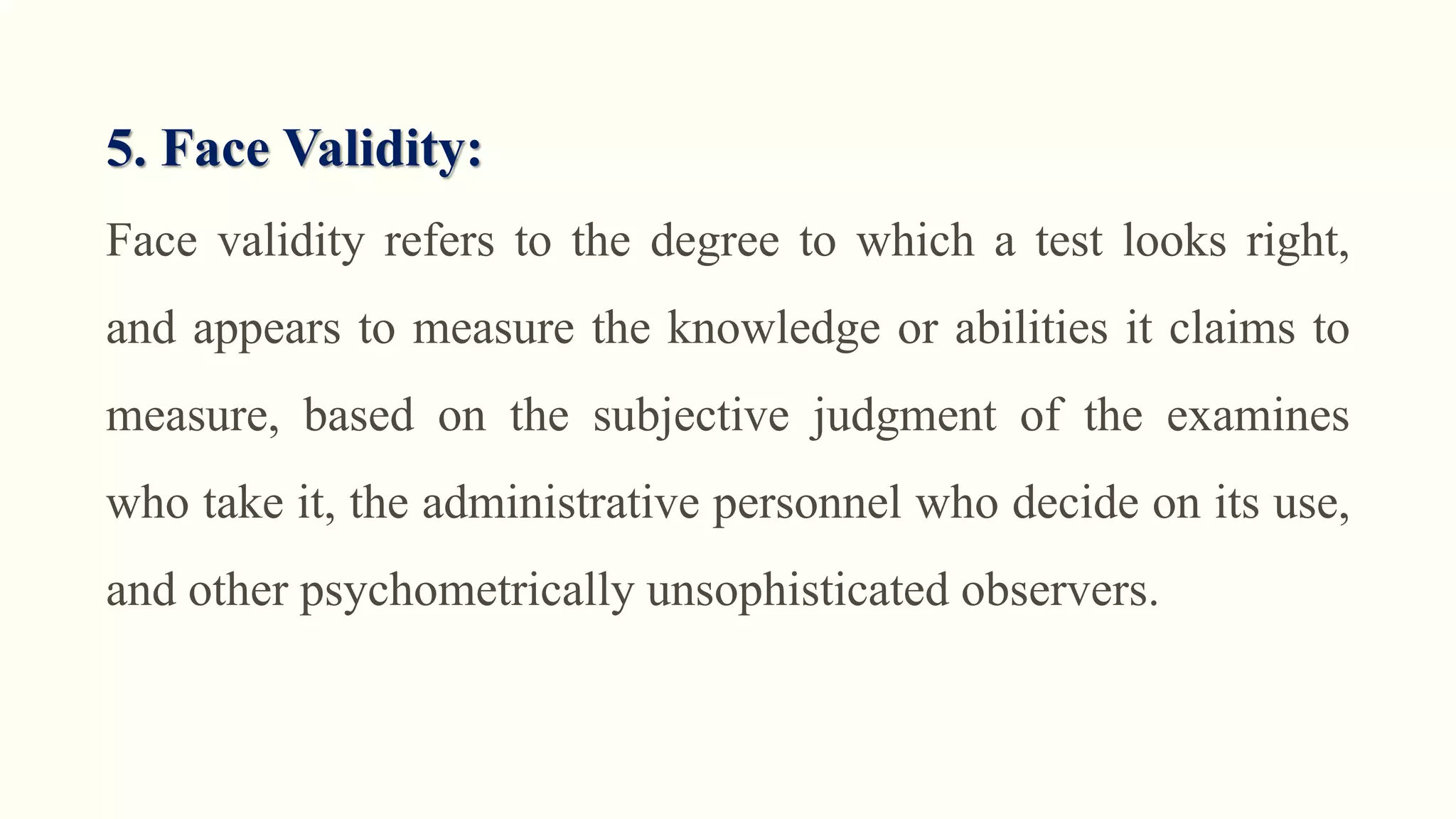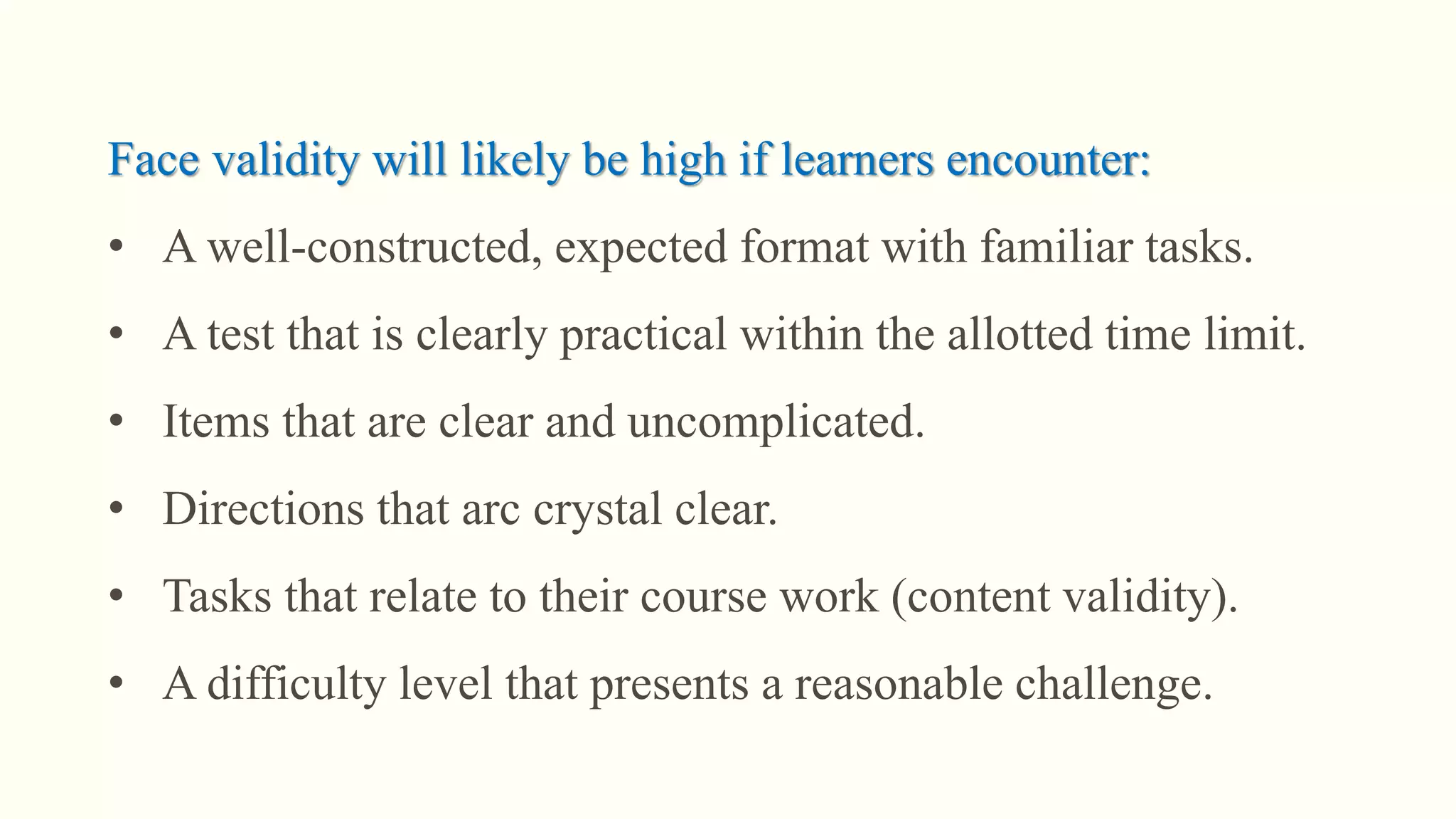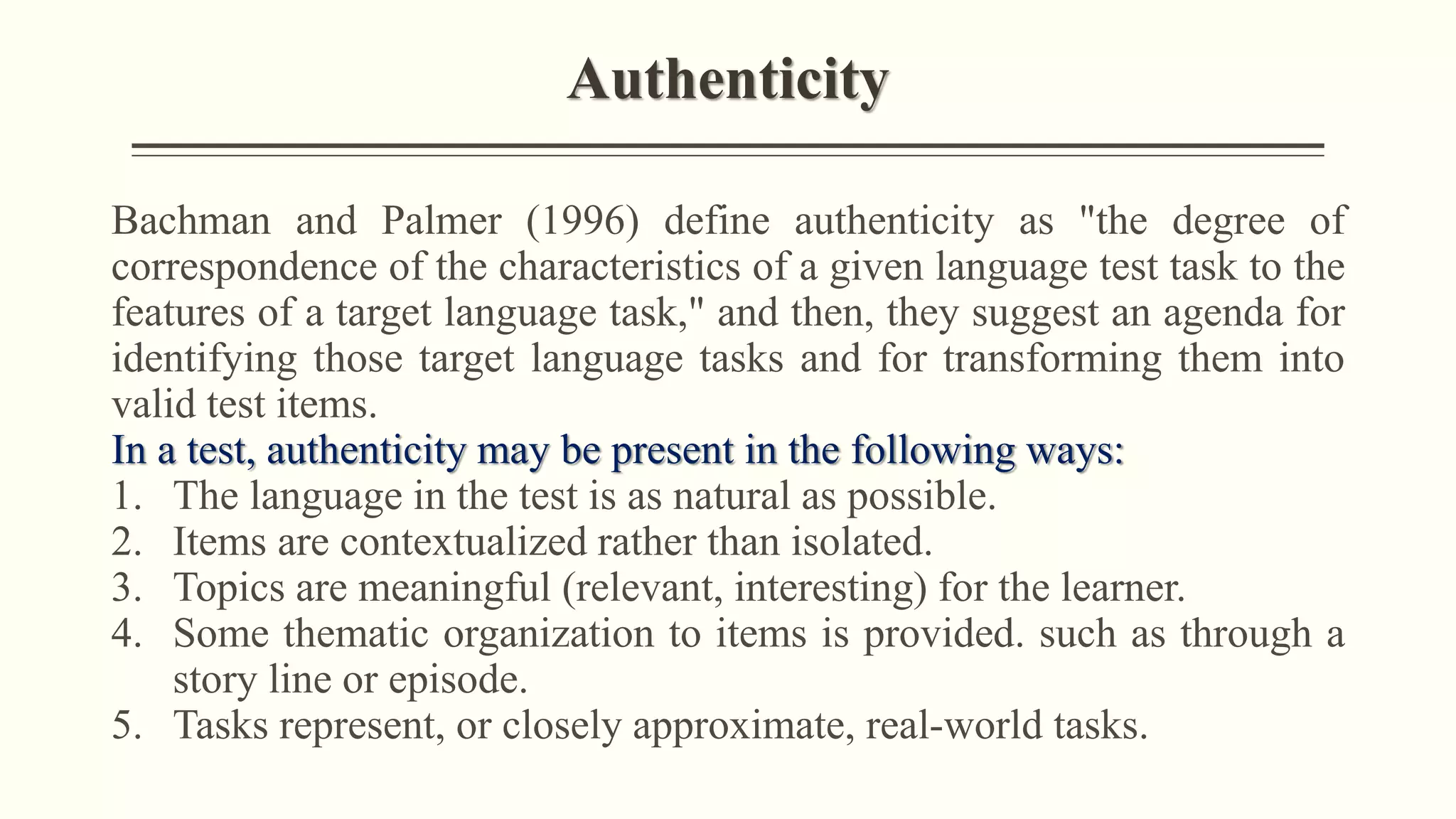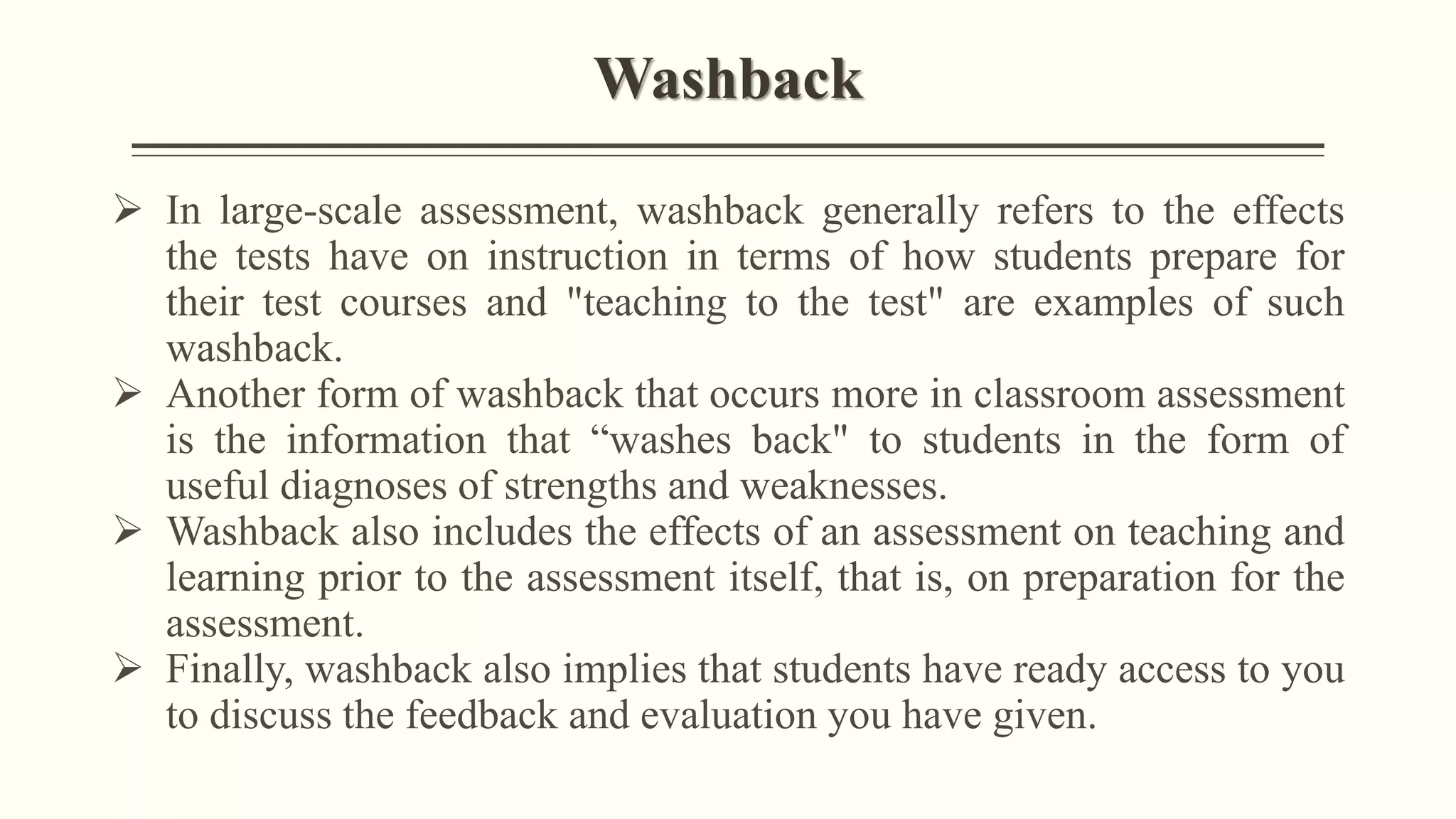The document discusses principles of language assessment. There are five key criteria a test should meet: practicality, reliability, validity, authenticity, and washback. Practicality means a test is inexpensive, time-efficient and easy to administer. Reliability refers to consistency of results and can be affected by students, raters, administration and the test itself. Validity means a test accurately measures the intended construct, which can be shown through content, criteria, construct and consequential evidence as well as face validity. Authenticity means a test resembles real-world language tasks. Washback refers to effects of a test on teaching and learning, including how students prepare.
